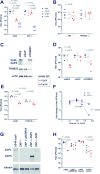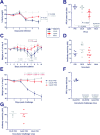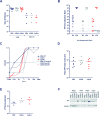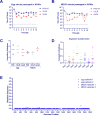CpG dinucleotide enrichment in the influenza A virus genome as a live attenuated vaccine development strategy
- PMID: 37146066
- PMCID: PMC10191365
- DOI: 10.1371/journal.ppat.1011357
CpG dinucleotide enrichment in the influenza A virus genome as a live attenuated vaccine development strategy
Abstract
Synonymous recoding of RNA virus genomes is a promising approach for generating attenuated viruses to use as vaccines. Problematically, recoding typically hinders virus growth, but this may be rectified using CpG dinucleotide enrichment. CpGs are recognised by cellular zinc-finger antiviral protein (ZAP), and so in principle, removing ZAP sensing from a virus propagation system will reverse attenuation of a CpG-enriched virus, enabling high titre yield of a vaccine virus. We tested this using a vaccine strain of influenza A virus (IAV) engineered for increased CpG content in genome segment 1. Virus attenuation was mediated by the short isoform of ZAP, correlated with the number of CpGs added, and was enacted via turnover of viral transcripts. The CpG-enriched virus was strongly attenuated in mice, yet conveyed protection from a potentially lethal challenge dose of wildtype virus. Importantly for vaccine development, CpG-enriched viruses were genetically stable during serial passage. Unexpectedly, in both MDCK cells and embryonated hens' eggs that are used to propagate live attenuated influenza vaccines, the ZAP-sensitive virus was fully replication competent. Thus, ZAP-sensitive CpG enriched viruses that are defective in human systems can yield high titre in vaccine propagation systems, providing a realistic, economically viable platform to augment existing live attenuated vaccines.
Copyright: © 2023 Sharp et al. This is an open access article distributed under the terms of the Creative Commons Attribution License, which permits unrestricted use, distribution, and reproduction in any medium, provided the original author and source are credited.
Conflict of interest statement
The authors have declared that no competing interests exist.
Figures








References
Publication types
MeSH terms
Substances
Grants and funding
LinkOut - more resources
Full Text Sources
Medical
Research Materials

